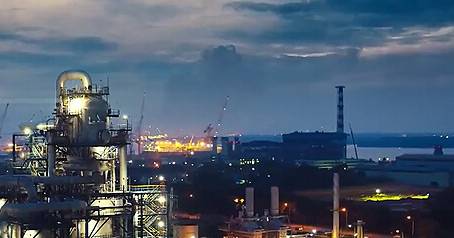Dec . 17, 2024 16:37 Back to list
Understanding the Benefits of PVC Drainage Pipe for Effective Water Management
Understanding PVC Drainage Pipes A Comprehensive Insight
Polyvinyl chloride (PVC) pipes have transformed the plumbing and drainage industries, offering a reliable, cost-effective, and durable solution for various applications. Among the many types of PVC pipes available, drainage pipes stand out for their ability to manage water flow efficiently and effectively. In this article, we will explore the characteristics, advantages, installation processes, and applications of PVC drainage pipes.
Characteristics of PVC Drainage Pipes
PVC drainage pipes are made from high-quality synthetic materials, which contribute to their lightweight, flexibility, and resistance to corrosion. Usually available in various diameters, these pipes are designed to facilitate the flow of wastewater and stormwater away from residential, commercial, and industrial sites. The smooth interior surfaces of PVC pipes minimize friction and blockages, ensuring a steady flow of drainage.
One of the important specifications of PVC drainage pipes is the SDR (Standard Dimension Ratio), which indicates the pipe's wall thickness relative to its diameter. Lower SDR values mean thicker walls, which can endure higher pressure or underground loads. Additionally, PVC pipes are available in different grades, allowing for customized solutions based on the specific requirements of a drainage system.
Advantages of PVC Drainage Pipes
The popularity of PVC drainage pipes can be attributed to several advantages
1. Durability PVC is known for its longevity, with a life expectancy of over 50 years. It does not corrode, rust, or degrade under extreme weather conditions, making it ideal for various environmental applications.
2. Cost-Effectiveness PVC pipes are generally less expensive than other materials such as metal or concrete. This affordability extends beyond initial purchase costs, as the long lifespan reduces the need for frequent replacements or repairs.
3. Lightweight and Easy to Handle The lightweight nature of PVC pipes simplifies transportation and installation. Workers can handle these pipes with ease, leading to decreased labor costs and project timelines.
4. Low Maintenance Unlike traditional materials, PVC drainage pipes require minimal maintenance once installed. Their smooth interior helps prevent buildup and clogs, further contributing to their reliability.
pvc drainge pipe

Installation Process
Installing PVC drainage pipes is straightforward, although it requires proper planning and execution to ensure optimal performance. The installation generally follows these steps
1. Site Preparation The installation area should be clear of debris and adequately graded to facilitate drainage.
2. Cutting Pipes PVC pipes can be easily cut to size using a saw. Accurate measurements are crucial for a seamless fit.
3. Joining Pipes Pipes can be joined using mechanical fittings or solvent cement. Solvent cement creates a strong chemical bond between the pipe ends, ensuring a watertight seal.
4. Backfilling After installation, the trench should be backfilled with soil to provide support and protect the pipes from damage.
5. Testing the System Once installed, the drainage system should be tested to ensure proper flow and leak-free connections.
Applications of PVC Drainage Pipes
PVC drainage pipes are versatile and find applications in various settings, including
- Residential Drainage Systems Used for wastewater discharge from kitchens, bathrooms, and other household areas. - Stormwater Management Ideal for managing rainwater runoff from roofs, driveways, and parking lots. - Agricultural Uses Employed in irrigation and field drainage to optimize water management in farming.
In conclusion, PVC drainage pipes are a vital component of modern plumbing and stormwater management systems. Their durability, cost-effectiveness, and ease of installation continue to make them a preferred choice for both residential and commercial applications. As urbanization and environmental concerns grow, the demand for efficient drainage solutions like PVC pipes is expected to increase, reflecting their importance in maintaining infrastructure and protecting the environment.
-
Durable Glossy PVC Rigid Sheet | Premium High-Shine Panels
NewsAug.26,2025
-
Durable PP Rigid Sheet: Lightweight, Chemical Resistant Solutions
NewsAug.21,2025
-
PVC Grey Sheet for Extraction: Chemical Resistant & Durable
NewsAug.19,2025
-
Durable PVC Pipe Fittings for Plumbing & Irrigation Needs
NewsAug.18,2025
-
HDPE Steel Belt Reinforced Spiral Corrugated Pipe | High Strength
NewsAug.17,2025
-
HDPE Pipe Fittings: Durable, Leak-Proof Solutions
NewsAug.16,2025

